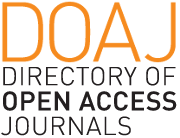Evaluating features for rhetorical structure classification in scientific abstracts
Abstract
Rhetorical structure classification is a NLP task in which we want to identify the rhetorical components of a discourse and its relationships. In this work, we aimed at automatically identifying propositions at the sentential level that make up the rhetorical structure of scientific abstracts. Specifically, the purpose was to evaluate the impact of different sets of attributes on the implementation of rhetorical classifiers for scientific abstracts written in Portuguese. For this, we used superficial features (extracted as TF-IDF values and selected with the $\chi^2$ test), morphosyntactic features (implemented by the AZPort classifier) and features extracted from \textit {word embeddings} models (Word2Vec, Wang2Vec and GloVe, all of them previously trained). These sets of features, as well as its combinations, were used for the training of the following supervised learning classifiers: Support Vector Machines, Naive Bayes, K-Nearest Neighbors, Decision Trees and Conditional Random Fields (CRF). They were trained and tested through cross-validation on three \textit{corpora} composed by abstracts of theses and dissertations. The best result, $94\%$ of F1, was obtained by the CRF classifier with the following combinations of features: (i) Wang2Vec--Skip-gram of $100$ dimension with the features from AZPort; (ii) TF-IDF, AZPort and \textit{embeddings} extracted with the Word2Vec--Skip-gram and GloVe models of dimensions $1000$ and $300$, respectively. From the results, we concluded that the AZPort features were fundamental for the performance of the CRF and that the combination with \textit{word embeddings} proved valid.
Copyright (c) 2019 Alessandra Harumi Iriguti, Valéria Delisandra Feltrim

This work is licensed under a Creative Commons Attribution 4.0 International License.
Authors who publish with this journal agree to the following terms:
- Authors retain copyright and grant the journal right of first publication with the work simultaneously licensed under a Creative Commons Attribution License that allows others to share the work with an acknowledgement of the work's authorship and initial publication in this journal.
- Authors are able to enter into separate, additional contractual arrangements for the non-exclusive distribution of the journal's published version of the work (e.g., post it to an institutional repository or publish it in a book), with an acknowledgement of its initial publication in this journal.
- Authors are permitted and encouraged to post their work online (e.g., in institutional repositories or on their website) prior to and during the submission process, as it can lead to productive exchanges, as well as earlier and greater citation of published work (See The Effect of Open Access).













